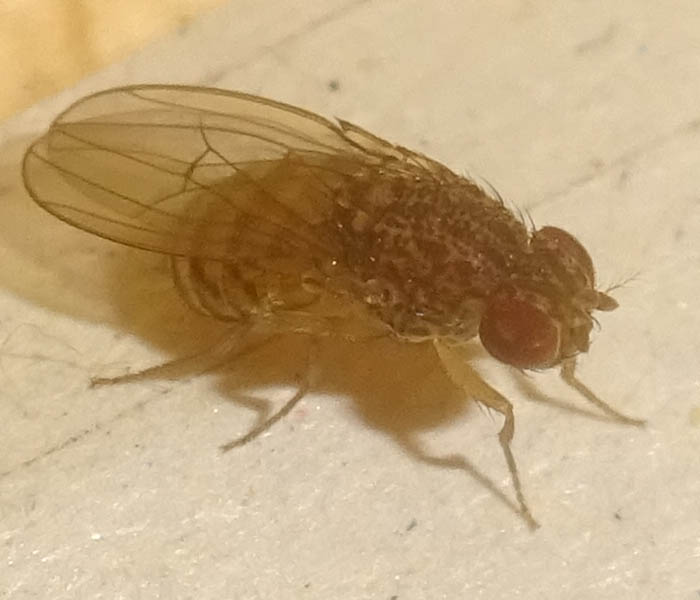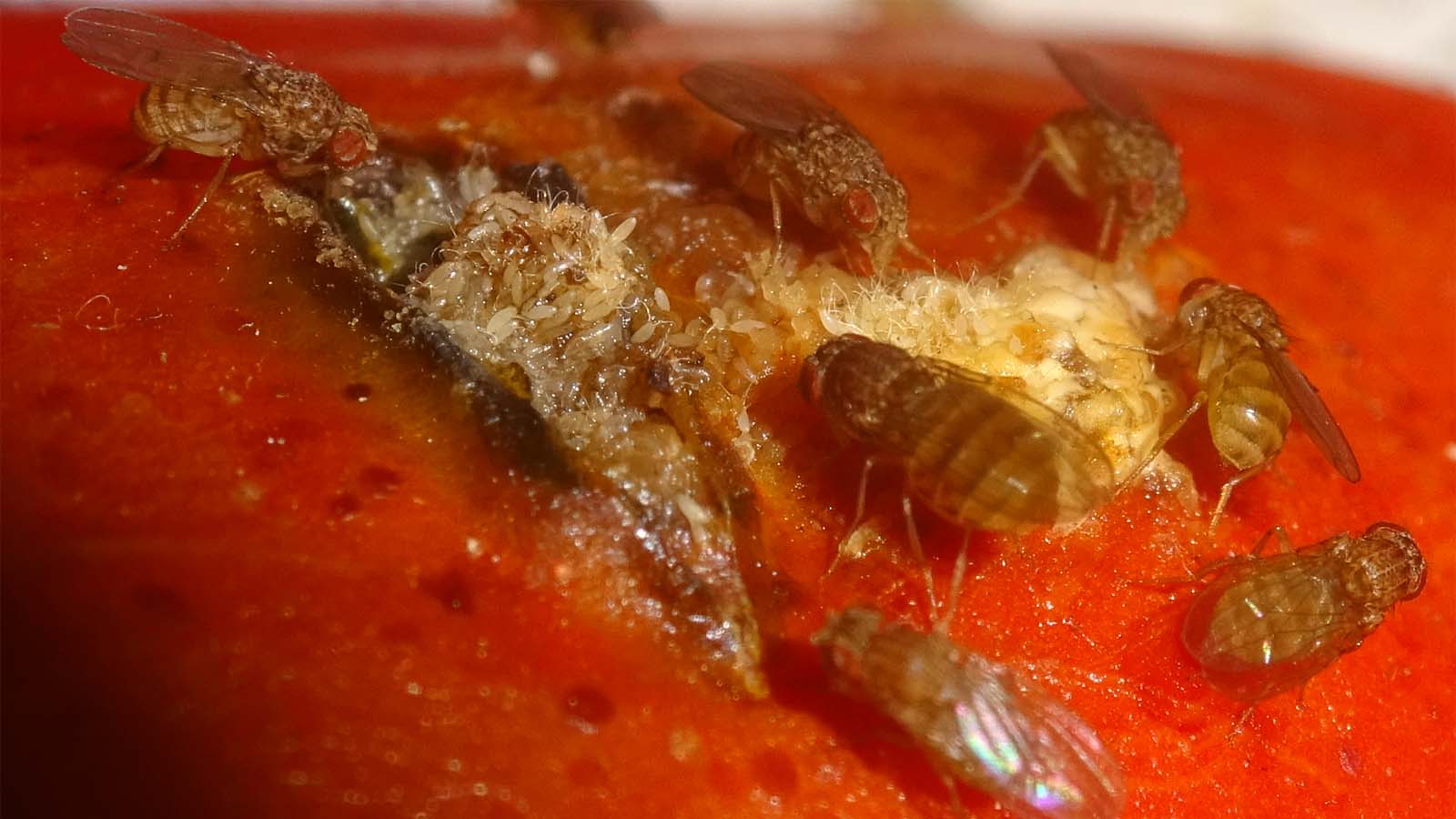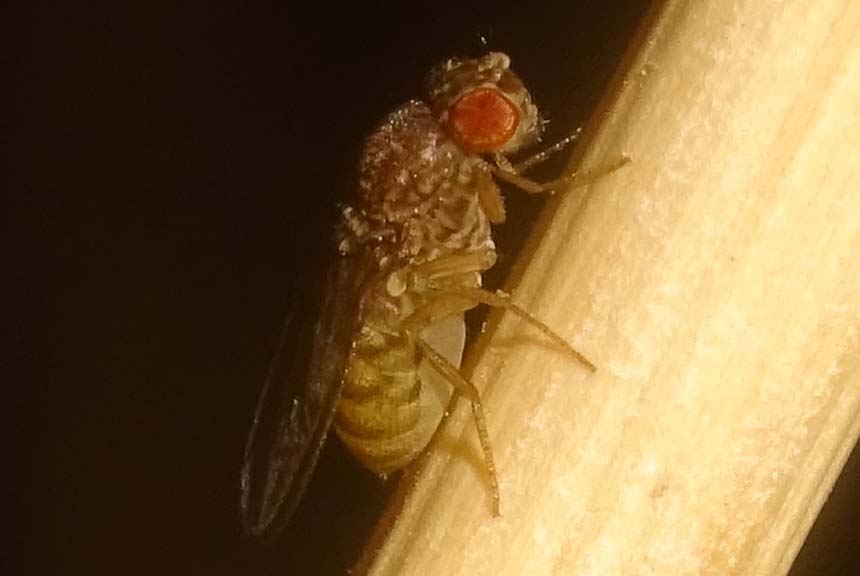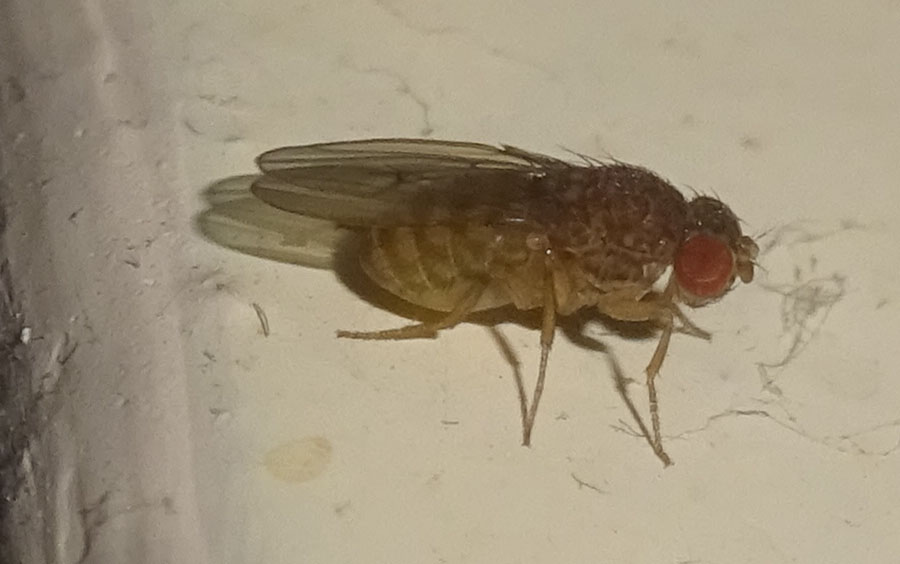Thread subject: Diptera.info :: Drosophila in my house for ID
Posted by williams on 12-11-2022 21:09
#1
12/11/2022 in Haute-Garonne, France
Hello,
I wonder which species is this Drosophila ?
Do you have any suggestion ?

Thanks in advance
Edited by williams on 12-11-2022 21:11
Posted by weia on 12-11-2022 23:33
#2
Hydei and repleta have such thoraxes, but maybe more species. I have no experience with them.
Posted by Jan Maca on 13-11-2022 07:53
#3
Yes, a species of repleta-group, but not the proper D. repleta. Difficult to tell more on the base of this picture.
Posted by Carnifex on 13-11-2022 09:31
#4
Why would this not be
D. repleta?
The size of the lateral light patches looks good, and there is a slight darkening visible at the costal break.
D. hydei can be excluded, and
D. mercatorium should not have such large abdominal lateral patches
Posted by Jan Maca on 13-11-2022 17:49
#5
Maybe I am wrong, but the darkening at the costal break is barely visible, it may be an artifact of the photo - a similar "darkening" can be seen at the basalmost break of costa. Concerning the lateral pale patches on abdomen, they look more like in D. mercatorum (larger than in D. repleta, not vice versa). Moreover, procoxa does not seem to be dark, contrary to D. repleta. If I should have to give an opinion, D. mercatorum seems me relatively most probable candidate, but it seems me too courrageous statement - on the base of only this picture.
Posted by Carnifex on 13-11-2022 20:15
#6
Ha! That was my wrong memory - I was certain that
repleta was the one with the larger patches. Now I am in line with Jan.
Somewhere I read that the abdominal distal stripes in
mercatorum are thinner than in
repleta
Posted by williams on 13-11-2022 21:08
#7
Here are 2 other photos taken today at the same place for more details.
Do you have a better idea of the species is this Drosophila ?


Edited by williams on 13-11-2022 21:11
Posted by Jan Maca on 15-11-2022 06:03
#8
It should be mercatorum or hydei. Male of D. hydei has a row of longer setae on protarsi, but these are not well discernible in pictures. Specimens should be kept; D. mercatorum has not been published from France as yet, though its occurence there is probable.
Posted by williams on 15-11-2022 10:19
#9
Even on the last 2 photos is it not visible enough for identification?
so here is another photo where the row of setae is better visible with the light background.

Edited by williams on 15-11-2022 10:56
Posted by Jan Maca on 15-11-2022 11:39
#10
Even the last photo does not seem to me quite deciding. Keep the flies if possible, I may inspect them.




